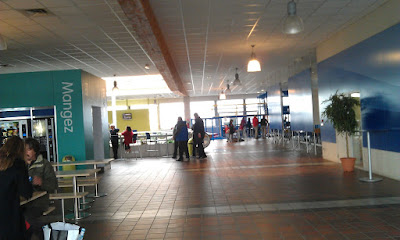This is the Repunsels Tower
Built as a cross between a water tower and a folley
Free to enter, amazingly you collect the large key from the reception at Hotel de la Tour. The is plenty of free parking.
The spiral staircase is wide and solid. Whilst you can look out the windows they cannot open.
The panoramic view from the top allows you to see for miles. As far as the motorway.
If your passing and have time for a break then give it a visit, oh and don't forget to give the key back.
Info spot - English
A modest family name appears in the twelfth century Masseret, and the presence of a castle atop the hill of the village is attested in the thirteenth Century, it is indeed in the late Middle Ages as a show Masseret replaces as chief - instead of a chatellenie controlled by the Viscount of Limoges.
The castle included a tower and main building, protected by a septic system.
The position of this fortress, commanding the passage between Upper and Lower Limousin, was essential during the Hundred Years War.
Info spot - French
Une modeste famille du nom de Masseret apparait au XIIe siecle, et la presence d’un chateau au sommet de la colline du bourg est attestee des le XIIIe Siecle; c’est en effet au bas Moyen age que Masseret se substitue a Salon comme chef-lieu d’une chatellenie controlee par le Vicomte de Limoges.
Le chateau incluait une tour quadrangulaire et un corps de logis, proteges par un systeme de fosses.
La position de cette forteresse, commandant le passage entre Haut et Bas Limousin, fut essentielle au moment de la Guerre de Cent Ans.













